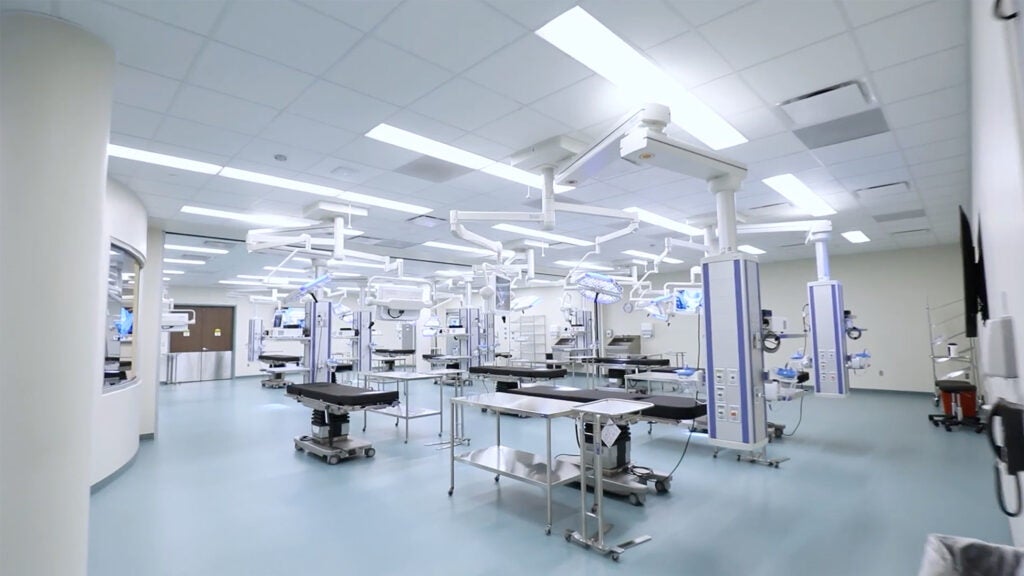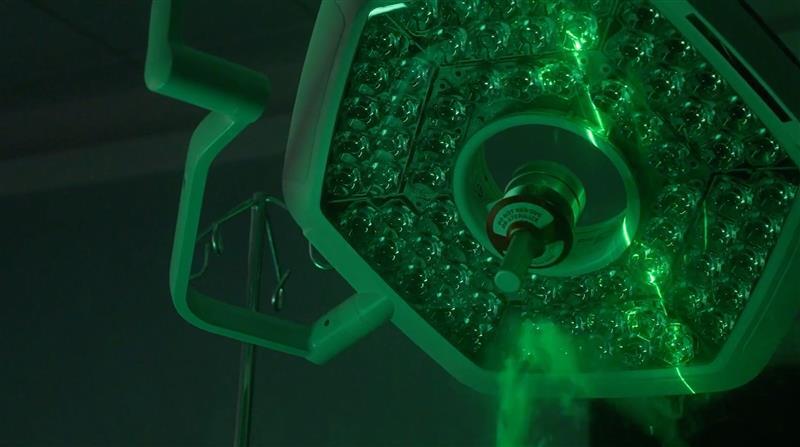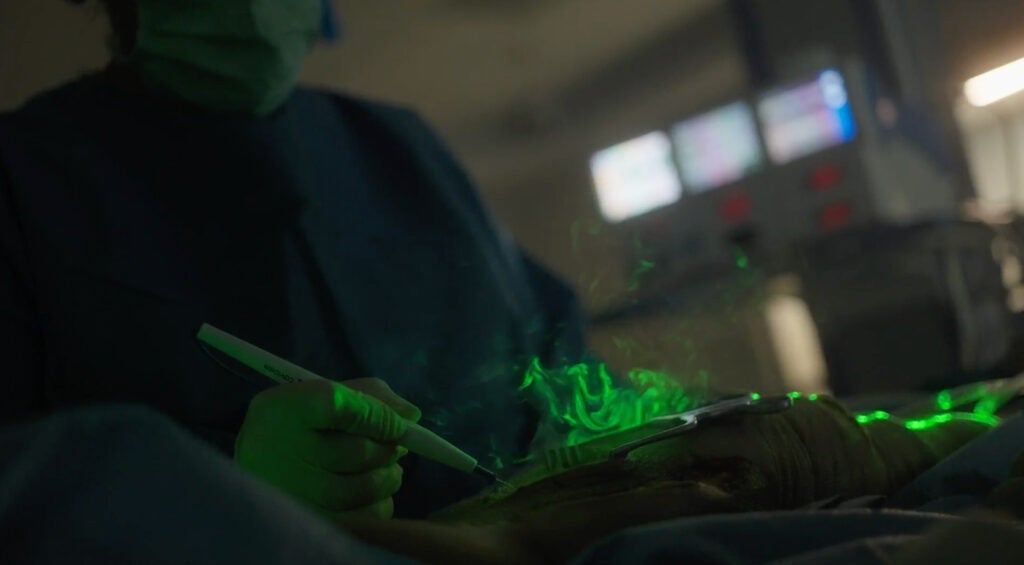Optimizing Operating Room Airflow: Why Surgical Light Design and Patient Warming Systems Matter
Most OR teams would never suspect that their trusted surgical lights and warming systems might be undermining the sterility they work so hard to protect. Yet that’s exactly what Baxter’s recent research suggests, and the implications may compromise your OR’s ability to maintain sterility and protect both surgical teams and patients.
The Hidden Impact of OR Equipment on Airflow
Ask most clinicians about infection prevention, and you’ll hear about proper sterilization and effective ventilation systems. But what’s rarely discussed is how surgical lights and other equipment positioned over the patient can unintentionally interfere with the ventilation airflow.”
Traditional surgical lights, for example, can block airflow, reduce velocity, and even create stagnant “recirculation zones” where bacteria-carrying particles (BCPs) linger.1 Likewise, forced air warming (FAW) systems can disrupt laminar flow, pushing potentially contaminated air upwards into sterile zones. 2 Together, these disruptions may elevate the risk of surgical site infections (SSIs) 3, despite surgical teams doing everything “by the book”.
What the Research Reveals
At the iExcel simulation center at the University of Nebraska Medical Center, Baxter researchers recreated a working OR to test how different equipment setups affected airflow and surgical smoke dispersal. Two scenarios were compared:
Scenario A: A surgical light designed with an airflow cut-out paired with conductive (Air-free) warming
Scenario B: A traditional surgical light without a cut-out paired with FAW
The results? Astounding.
With scenario A, airflow remained smooth and surgical smoke was pushed out of the sterile field, giving surgeons better visualization and supporting sterility.5 With scenario B, airflow stalled, smoke lingered over the surgical site, and contaminants had greater opportunity to settle where they shouldn’t.
Beyond the Lab: Real-World Implications
Why does this matter beyond the research setting? Because real-world ORs face the same challenges every day. The cumulative impact of traditional lights and FAW systems isn’t always visible – until it’s too late.
These are the facts:
- Surgical smoke isn’t just unpleasant; it’s a known hazard. The Association of Perioperative Nurses (AORN) has issued clear guidelines on surgical smoke safety, and 18 states now require surgical smoke evacuation by law 6
- Poor airflow can cause hazardous substances to linger in the OR, exposing both patients and staff to several health risks such as headaches, dizziness, and long-term respiratory issues 7
- In 2021, a Japanese study of 89 spinal surgeries found that in 6% of cases, PM₂.₅ air concentrations rose to levels classified as “harmful to health,” and 13.4% reached levels labeled “serious health danger,” with 9% hitting emergency warning thresholds. 8
“Researchers calculated that the average daily [surgical smoke] exposure for perioperative personnel had the passive effects of smoking 27 to 30 unfiltered cigarettes per day?” 9
In short, optimal OR airflow isn’t just a “nice to have”, it’s a safety issue and soon, a potential compliance issue.
How Equipment Design Shapes the OR Environment
Surgical lights with innovative airflow cut-outs – sometimes designed with a clover-shaped head – can help prevent the formation of low-velocity “dead zones”. Instead of trapping BCPs, they support ventilation systems doing their job, carrying contaminants away from the sterile field. 5
Patient warming systems also play a role. Conductive “air-free” warming solutions, help clinicians maintain patient normothermia without sending warm air currents upward. FAW systems on the other hand, may push plumes of air – and whatever’s in them – into sterile areas. 2
These aren’t just subtle engineering differences; they’re differences that can influence sterility across the OR.
Traditional vs. Airflow Optimized Surgical Equipment
Let’s break it down:
| Traditional Surgical Lights | Surgical Lights with Airflow Cut-Outs |
| Without any openings for air to flow through these lights, ventilation flow is blocked, and stagnant zones are created where contaminants can settle. 1 | The cut-out design on these surgical lights can help support ventilation flow, reduce “dead zones”, and help surgical smoke disperse efficiently. 5 |
| Forced Air Warming (FAW) | Conductive (Air-Free) Warming |
| With warm air being blown through an external blower, warm air can be pushed upwards and potentially disrupt the dispersal of surgical smoke. 2 | Since patients are warmed conductively without the need for external blowers, you can keep them warm without introducing disruptive air currents. 5 |
What Can Happen When Airflow is Disregarded?
New findings from a recent study conducted in 2022 reveal that ignoring airflow issues has deeper consequences than many surgical teams may realize. Surgical smoke is more than a nuisance – it’s a carrier of chemical compounds like benzene and toluene, as well as biological material including viruses and bacteria. 7 Over time, these contaminants don’t simply breakdown and go away. They can accumulate, cling to surfaces, and even be absorbed by both surgical teams and patients during procedures.
Did you know?
“Up to 90% of surgical smoke particles are <2.5 µm—small enough to bypass standard mask filtration.” 4
Why Ignoring This Research Could Cost You
Here’s the uncomfortable truth: Ignoring these findings may be overlooking one of the easiest ways to improve safety in the OR. You might also risk non-compliance with emerging smoke evacuation requirements – or miss opportunities to protect surgical staff from inhaling toxic surgical plumes.
The Bottom Line: It’s Time to Rethink OR Airflow
Optimizing OR airflow isn’t just about upgrading HVAC systems – it’s about looking at every factor that shapes how air moves in the operating room. From the lights overhead to the warming system under the drapes, these decisions can have ripple effects on infection prevention, staff safety, and the health of everyone in the room.
Don’t Miss the Full Story
This blog is just the beginning. The whitepaper dives into:
- Side-by-side comparisons of traditional vs. optimized surgical tools
- Visuals from the simulated OR study
- Recommendations for integrating airflow-optimized equipment into your OR
Don’t wait until your team is facing a smoke-filled field or you’re out of compliance. Explore Baxter’s research into airflow-friendly OR design and potential strategies to support infection prevention.
References
- Sadeghian, Parastoo, et al. ” Impact of Surgical Lamp Design on the Risk of Surgical Site Infections in Operating Rooms with Mixing and Unidirectional Airflow Ventilation: A Numerical Study.” Journal of Building Engineering, vol. 29, 2020, p. 101423. ScienceDirect, https://doi.org/10.1016/j.jobe.2020.101423. Accessed 17 Apr. 2020.
- Shirozu, Kazuhiro, et al. ” Effects of Forced Air Warming Systems on the Airflow and Sanitation Quality of Operating Rooms with Non-Laminar Airflow Systems.” Perioperative Care and Operating Room Management, vol. 20, 2020, p. 100119, https://doi.org/10.1016/j.pcorm.2020.100119. Accessed 30 May 2020
- Sadrizadeh, Sasan, et al. ” A Systematic Review of Operating Room Ventilation.” Journal of Building Engineering, vol. 43, 2021, 102693, https://doi.org/10.1016/j.jobe.2021.102693. Accessed 18 May 2021.
- Zhou, Yong-zhi, et al. “Surgical Smoke: A Hidden Killer in the Operating Room.” Asian Journal of Surgery, Elsevier, 29 Mar. 2023, www.sciencedirect.com/science/article/pii/S1015958423003731#section-cited-by.
- Internal data on file.
- Williams, Katherine. “Guidelines in Practice: Surgical Smoke Safety.” AORN Journal, AORN, Inc, 2022, https://aorn.us/aug22-cea. Accessed [05 March 2025].
- Canicoba ARB, Poveda VB. Surgical smoke and biological symptoms in healthcare professionals and patients: a systematic review. J Perianesth Nurs. 2022;37(1):130-136.
- Okoshi, K., Hida, K., Kinoshita, K., Morishima, T., Nagai, Y., Tomizawa, Y., Yorozuya, K., Nishida, T., Matsumoto, H., & Yamato, H. (2022). Measurement of particulate matter 2.5 in surgical smoke and its health hazards. Surgery today, 52(9), 1341–1347. https://doi.org/10.1007/s00595-022-02473-z
- Hill, D. S., O’Neill, J. K., Powell, R. J., & Oliver, D. W. (2012). Surgical smoke – a health hazard in the operating theatre: A study to quantify exposure and a survey of the use of smoke extractor systems in UK plastic surgery units. Journal of Plastic, Reconstructive & Aesthetic Surgery, 65(7), 911–916.
Baxtor.com
US-CS388-250009 (v1.0) 09/2025






 Free Daily News
Free Daily News